Search Results
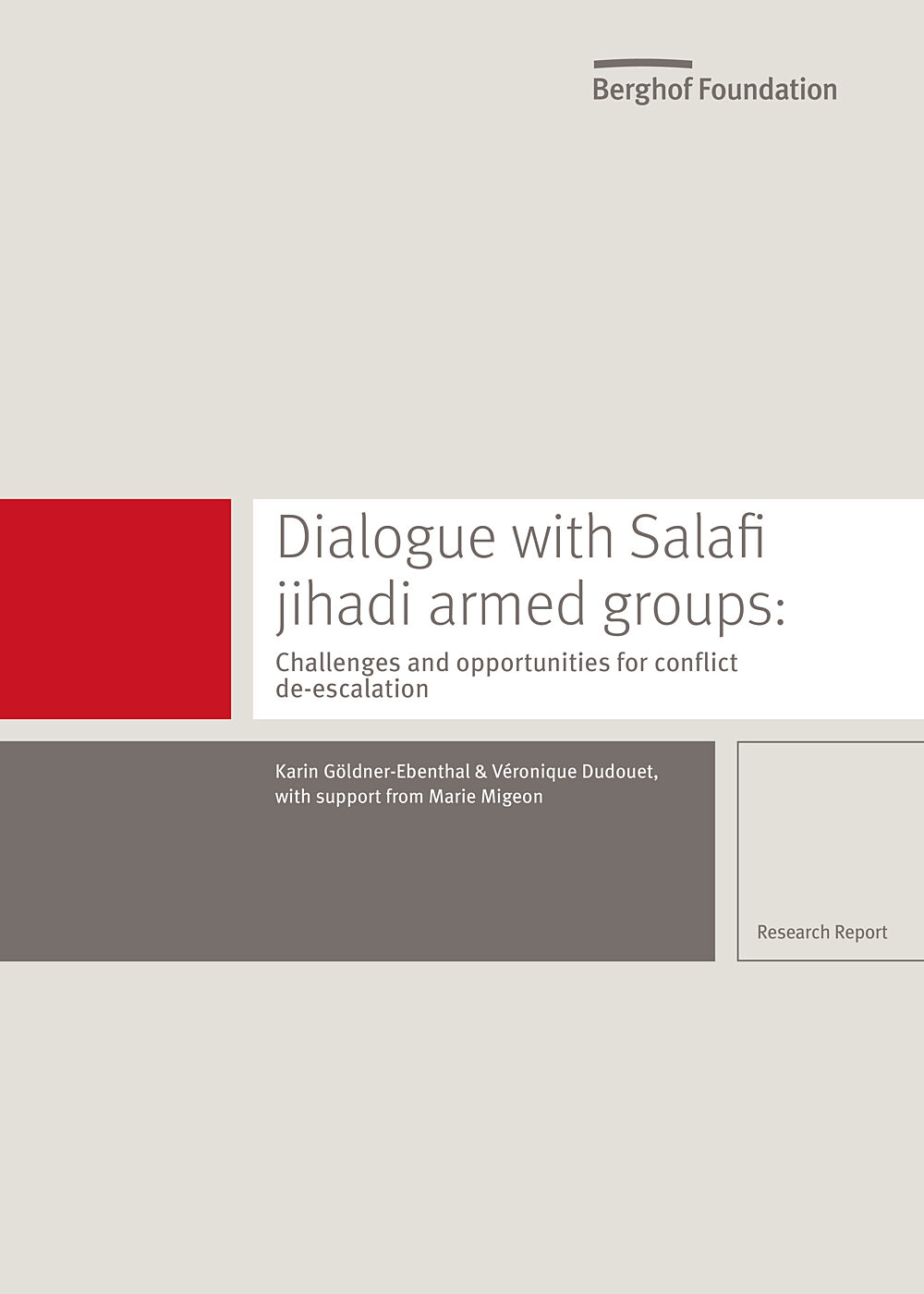
Dialogue with Salafi jihadi armed groupsChallenges and opportunities for conflict de-escalation
In some of the most intense ongoing armed conflicts (Syria, Iraq, Afghanistan, Somalia and Nigeria, to name a few), violent state challengers are characterised by their radical religious beliefs rooted in Salafi-based Islamism.
To better understand possible pathways to violence de-escalation or conflict transformation in such contexts, one needs to analyse the behavioural, ideological and organisational patterns of Salafi jihadi armed groups (SJAGs).
- Year 2019
- Author(s) Karin Göldner-Ebenthal, Véronique Dudouet, Marie Migeon
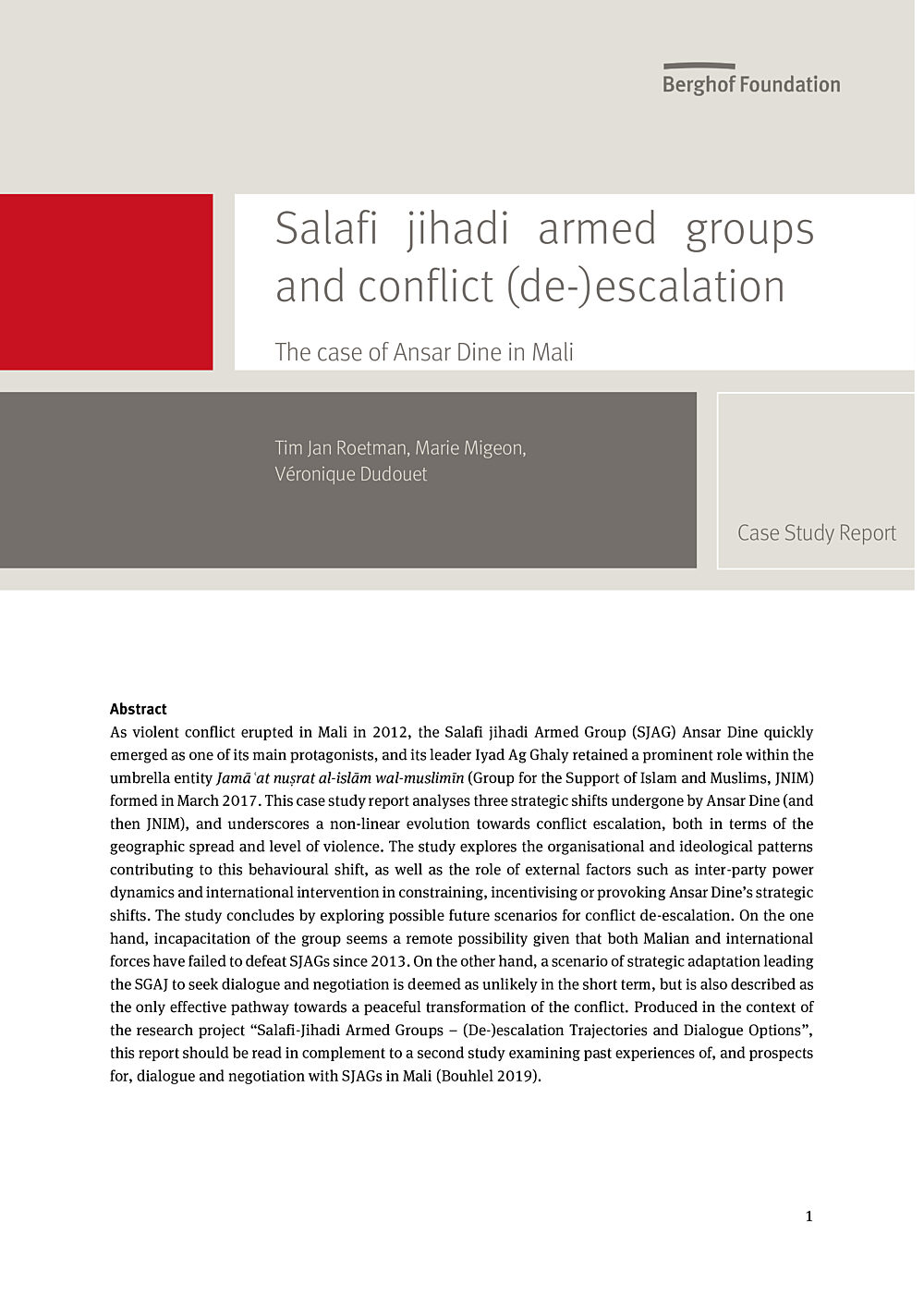
Salafi jihadi armed groups and conflict (de-)escalationThe case of Ansar Dine in Mali
As violent conflict erupted in Mali in 2012, the Salafi jihadi Armed Group (SJAG) Ansar Dine quickly emerged as one of its main protagonists, and its leader Iyad Ag Ghaly retained a prominent role within the umbrella entity Jamāʿat nuṣrat al-islām wal-muslimīn (Group for the Support of Islam and Muslims, JNIM) formed in March 2017.
- Year 2019
- Author(s) Tim Jan Roetman, Marie Migeon, Véronique Dudouet
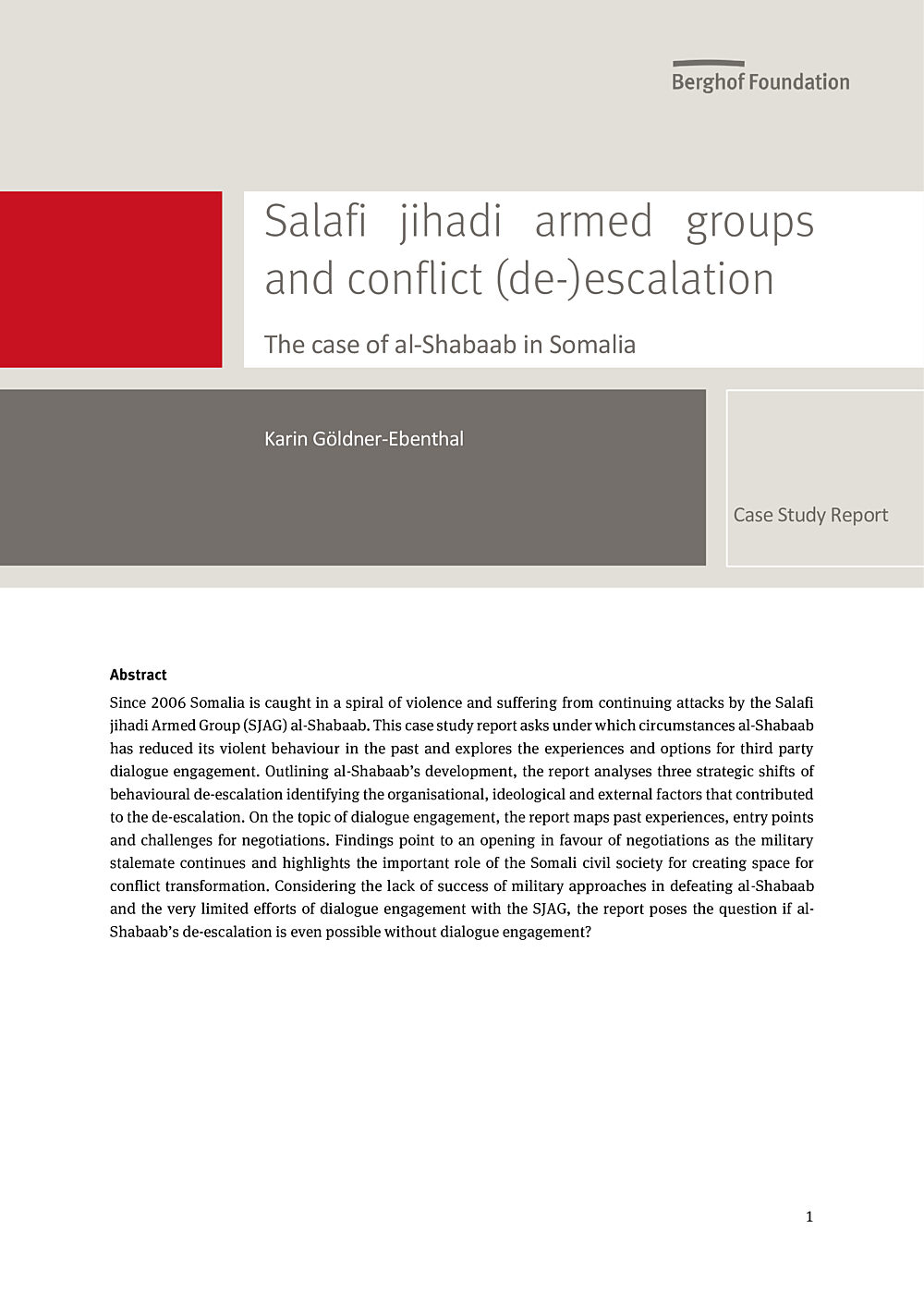
Salafi jihadi armed groups and conflict (de-)escalationThe case of al-Shabaab in Somalia
Since 2006 Somalia is caught in a spiral of violence and suffering from continuing attacks by the Salafi jihadi Armed Group (SJAG) al-Shabaab. This case study report asks under which circumstances al-Shabaab has reduced its violent behaviour in the past and explores the experiences and options for third party dialogue engagement.
- Year 2019
- Author(s) Karin Göldner-Ebenthal
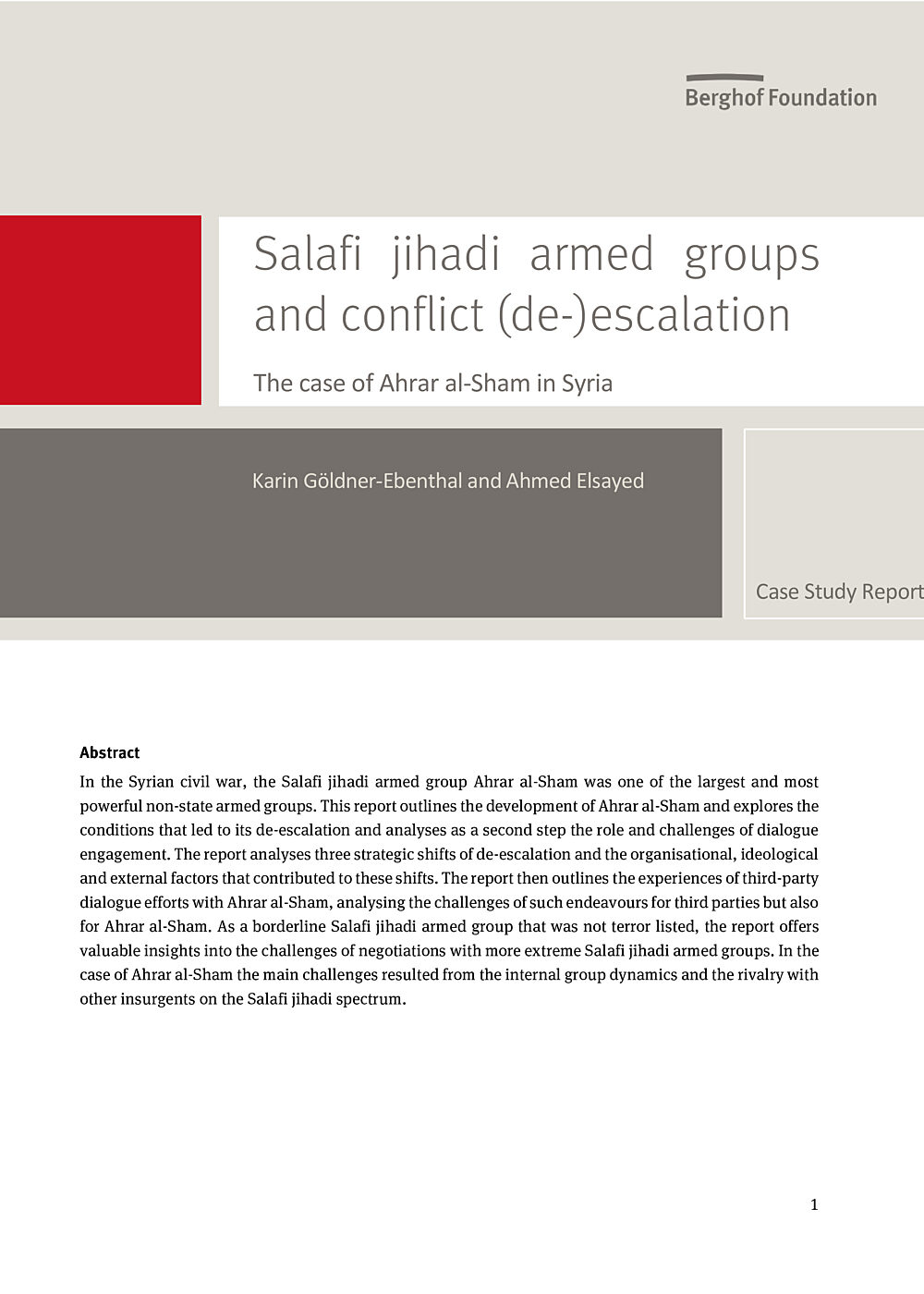
Salafi jihadi armed groups and conflict (de-)escalationThe case of Ahrar al-Sham in Syria
In the Syrian civil war, the Salafi jihadi armed group Ahrar al-Sham was one of the largest and most powerful non-state armed groups. This report outlines the development of Ahrar al-Sham and explores the conditions that led to its de-escalation and analyses as a second step the role and challenges of dialogue engagement.
- Year 2019
- Author(s) Karin Göldner-Ebenthal, Ahmed Elsayed
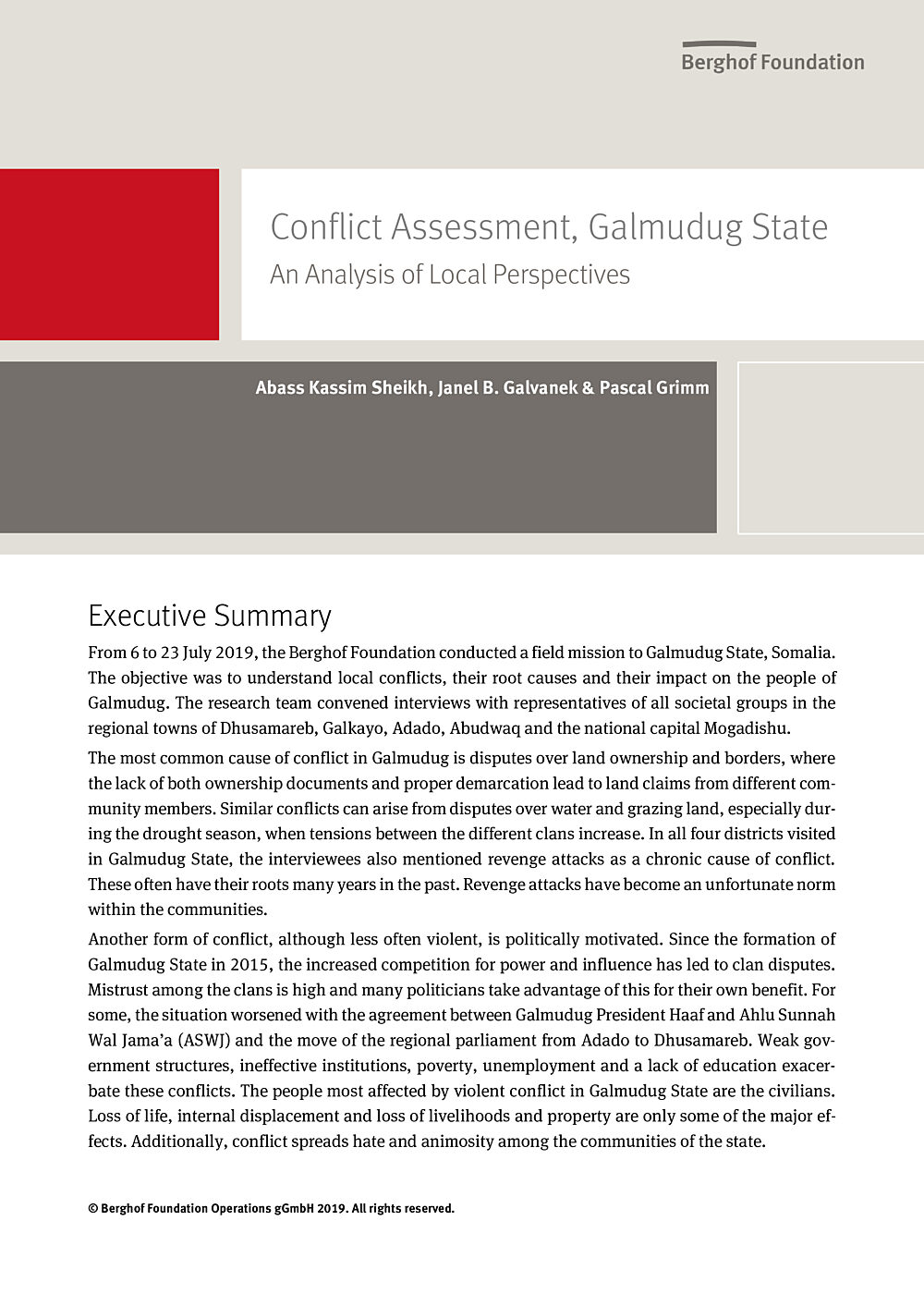
Conflict Assessment, Galmudug StateAn Analysis of Local Perspectives
This study investigated the nature and dynamics of conflicts in Galmudug State. The assessment examined the various conflicts that exist in the state and the key actors that play a central role in these conflicts. The assessment also examined the conflict resolution mechanisms that are used to resolve local conflicts in Galmudug State, and the actors that play an important role in conflict resolution and reconciliation processes. Furthermore, we examined opinions and attitudes on topics such as federal-ism, the 4.5 system and overall political participation in Galmudug State. Lastly, the study investigated the various challenges to conflict resolution and reconciliation processes as well as the urgent needs of the citizens of Galmudug State with regard to peace and conflict.
- Year 2019
- Author(s) Janel B. Galvanek, Pascal Grimm
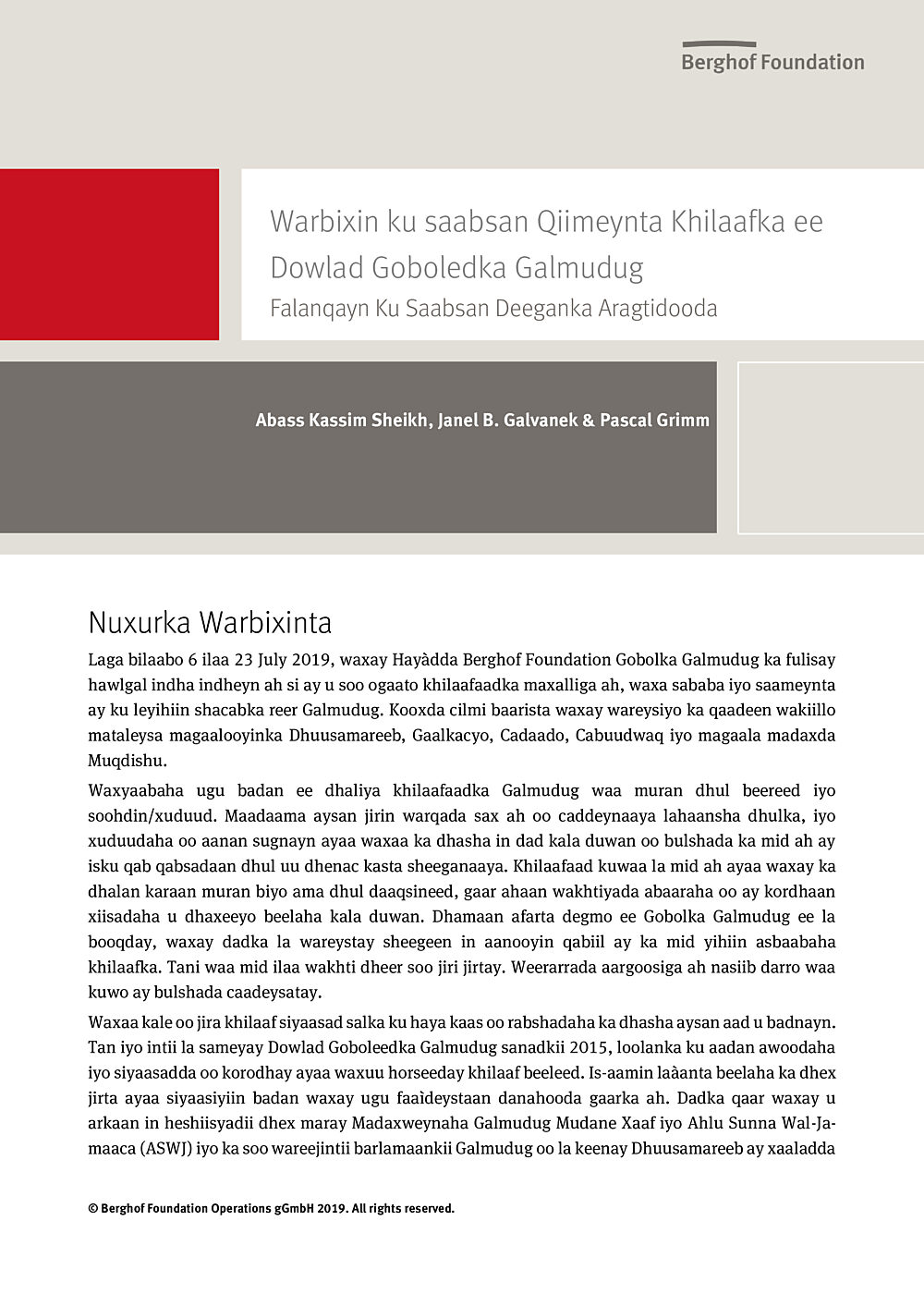
Warbixin ku saabsan Qiimeynta Khilaafka ee Dowlad Goboledka GalmudugFalanqayn Ku Saabsan Deeganka Aragtidooda
Daraasadaan waxay baaris ku sameysay nooca iyo habka is rogrogidda khilaafaadka Galmudug. Qiimeyntu waxay baartay khilaafaad kala duwan oo gobolka ka dhex jira iyo jilayaasha doorka ugu muhiimsan. Waxaa kale oo ay qiimeyntu baartay habkii horay khilaafka Galmudug loogu xallin jiray, iyo jilayaasha doorka muhiimka ah ka ciyaara xallinta khilaafka iyo geedi-socodka dib u heshiisiinta. Intaa waxaa dheer in aan baarnay fikrada iyo aragtiyo ay ka mid yihiin federaal, nidaamka 4.5 iyo guud ahaan ka qeybgalka siyaasadda Galmudug. Ugu dambeyntii, daraasadaan waxay baartay caqabada kala duwan oo ku gudban xallinta khilaafka iyo geedi-socodka dib u heshiisiinta, iyo sidoo kale, baahida deg degga ah ee uu shacabka reer Galmudug qabo markii loo eego nabad iyo khilaaf.
- Year 2019
- Author(s) Janel B. Galvanek, Pascal Grimm
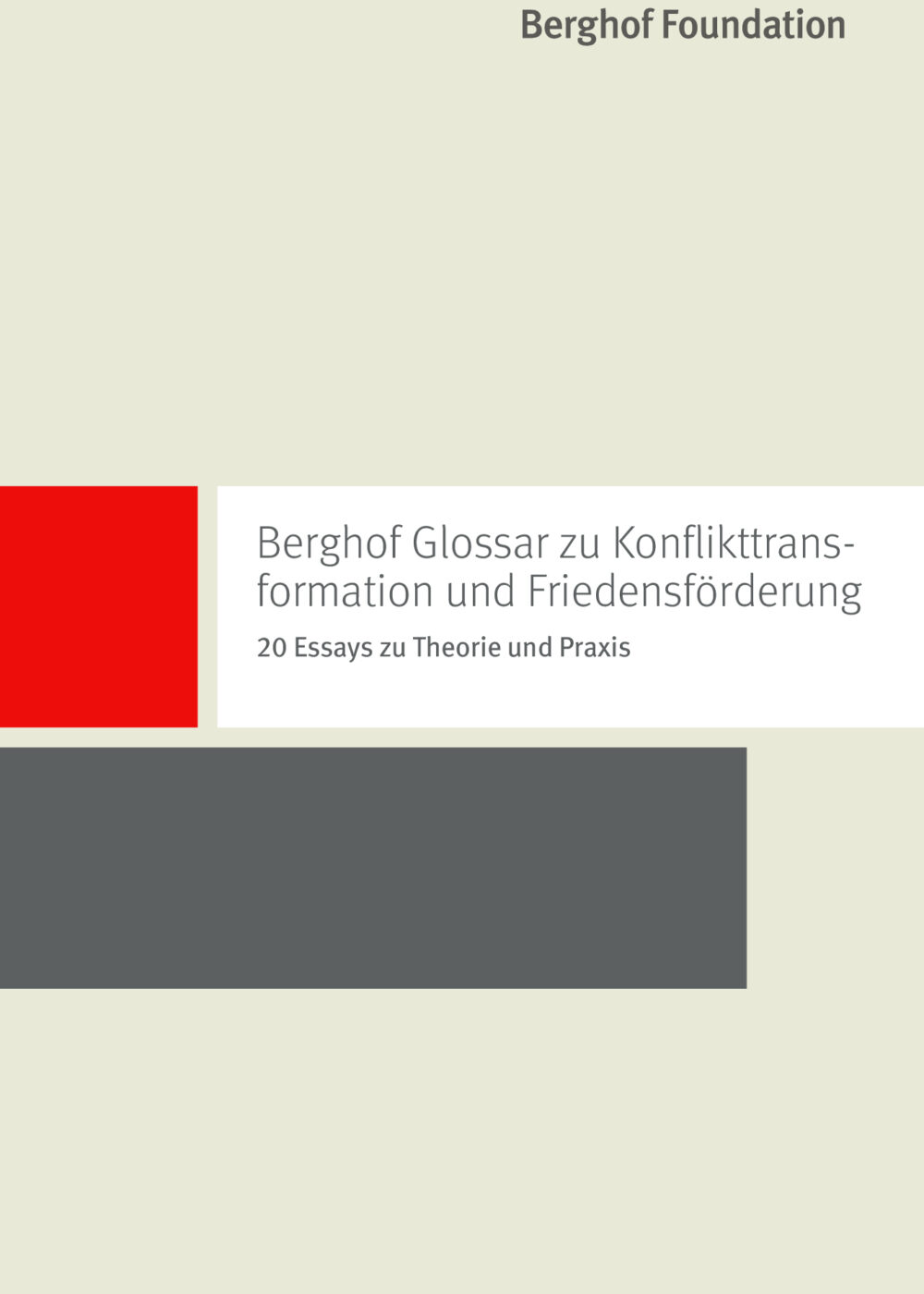
Berghof Glossar zu Konflikttransformation und Friedensförderung20 Essays zu Theorie und Praxis
Das Berghof Glossar zur Konflikttransformation und Friedensförderung stellt die wichtigsten Grundprinzipien und -ansätze unserer Arbeit vor, in der wir Menschen und Konfliktparteien auf der ganzen Welt bei ihren Bestrebungen begleiten, eine friedlichere Zukunft zu schaffen.
- Year 2020
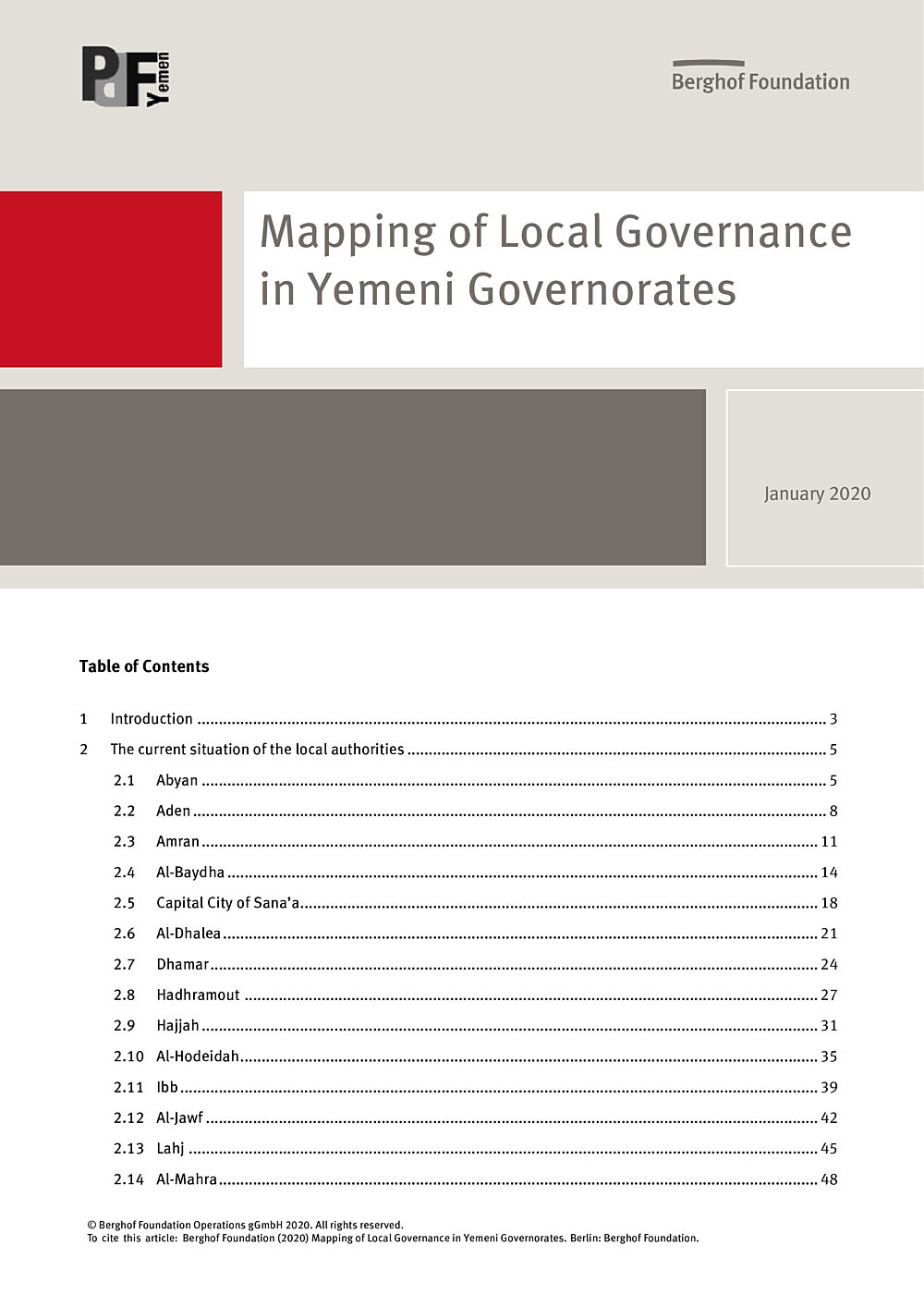
Mapping of Local Governance in Yemeni Governorates
This mapping outlines the situation faced by the population in all 22 governorates of Yemen. We see this as a working draft and welcome any additions, corrections, or comments you might have.
The mapping highlights the economic activities and resources that remain available and introduces the local administration and the situation of the local council in each governorate. It explores the extent to which different institutions of local authority — local councils, executive offices, and governors’ offices — continue to perform their mandates, and provides an overview of the availability of basic services, especially in the health, education, and water and sanitation sectors. The mapping is based on the review and analysis of documents, statistics, and official reports by Yemeni and international organizations, published studies and research, and interviews with local leaders in the governorates.
- Year 2020
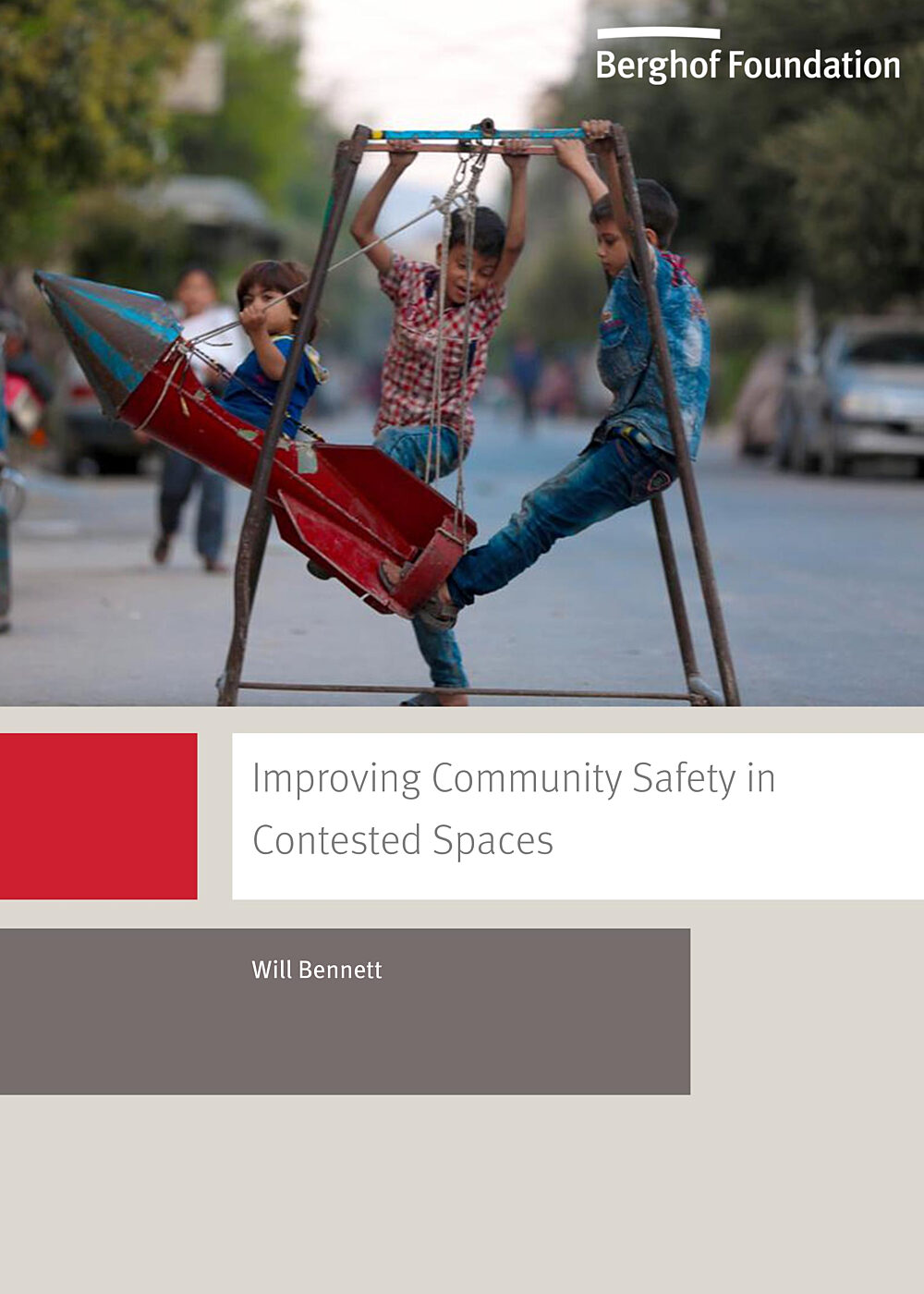
Improving Community Safety in Contested SpacesA Handbook for Syrian Civil Society Actors
The handbook is designed to help civil society actors in contested spaces and conflict settings provide safety for their communities. It outlines the key principles of the community safety approach and provides practical guidance on how to identify security challenges and how to implement strategies to counter them. The handbook was originally developed for civil society actors in Syria, but it can also be used in other contexts. The handbook is currently also available in Arabic.
- Year 2020
- Author(s) Will Bennett
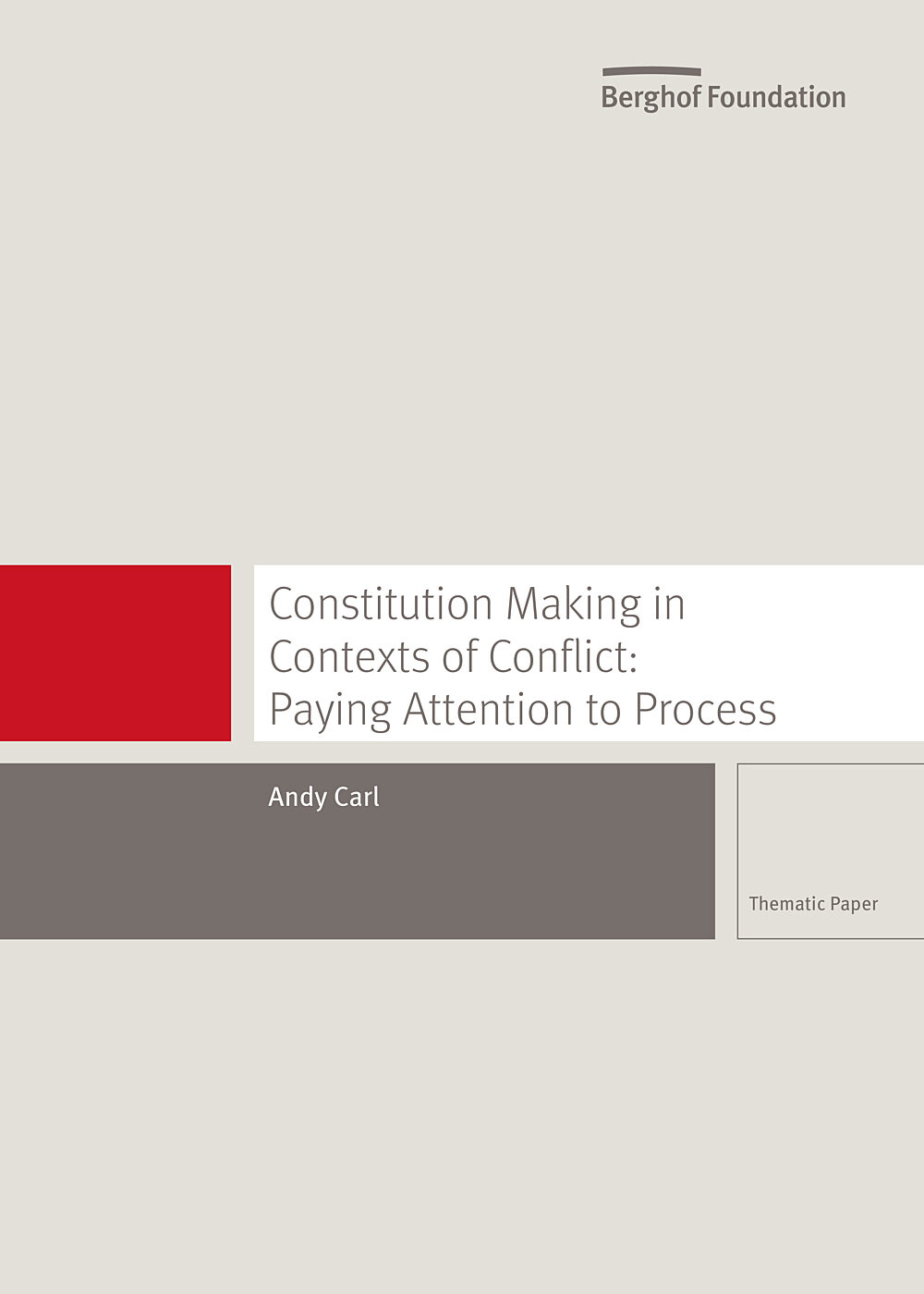
Constitution Making in Contexts of ConflictPaying Attention to Process
Carl sets the background of his study as such: Behind the headlines of reformed and new constitutions lie complex and dynamic processes with prominent and less prominent actors and initiatives, all taking place in same space and time as the ongoing crisis and conflicts. When successful, their actions add up to processes of constitution building that represent a new and purposeful dynamic of accommodation and assertion of a new law-based order. This transformative change emerges out of the counter-current of powerful and self-perpetuating economic, political and social systems of conflict. Within this background, Carl addresses questions like: what do we know about how such change processes happen, and what can we learn from those deliberate, planned and implemented projects, initiatives and interventions? He sets out a series of framing issues and concepts.
- Year 2019
- Author(s) Andy Carl